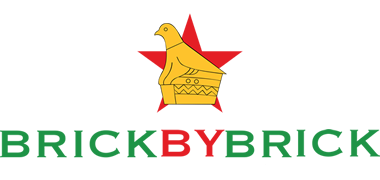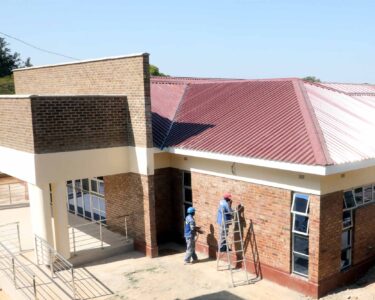Minister of State for Provincial Affairs and Devolution: Abednico Ncube
Permanent Secretary for Provincial Affairs and Devolution: Latiso Laticia Dhlamini-Maseko
Vision: “Towards Sustainable Economic Growth for a Devolving Rainbow Province”
Motto: “The Rainbow Province” (anchored on the province’s multiple many languages)
Languages: Ndebele, Sotho, Venda, Kalanga, Pfumbi, Shangani, Nyanja, Jaunda, Sililima, Xhosa, Shona and English
Profile
Located in the southernmost part of Zimbabwe, Matabeleland South Province shares international boundaries with South Africa to the south and Botswana to the west. The province has a total area of 54 172 km2, and a population of 760 345 (according to 2022 preliminary census figures) people, giving an average density of 14 persons per km2 . Per capita income is approximately US$1,600 annually. The province is a gateway and corridor to most Southern Africa Development Community (SADC) economies and hosts one of the busiest border posts in sub- Saharan Africa, the Beitbridge Border Post. It lies in agro-ecological regions IV and V, which are characterised by low and erratic rainfall patterns.
Mining and quarrying
Matabeleland South has a huge and highly diversified mineral resource base dominated by two prominent geological features, namely the famous Great Dyke and the ancient greenstone belts (gold, diamonds, coal, limestone and flint clay) also known as Gold Belts.
Existing water bodies
Despite the erratic and unreliable rainfall patterns, water bodies in Zhovhe, Mtshabezi, Botela, Inyankuni, Ncema, Lake Cunningham and Ngwizi dams present opportunities for aqua-activities like yachting, fisheries and canoeing.
Agriculture
The vast sweet grass presents opportunities to produce high-quality cattle, sheep and goat breeds with the associated value chains in leather as well as meat canning.
Citrus
In horticulture there are opportunities in tomato sauce, cabbage, carrots as well as citrus fruits with the associated fruit juice manufacture such as concentrate and various types of juices.
Tourism
Matabeleland South is home to an array of tourist destinations and significant tourism infrastructure that includes rock paintings. The majestic Matopos Hills, Dlodlo Ruins, Manyangwa as well as the Chipise Hot Springs are among the province’s standout tourist attractions.
The rich arts and crafts in Maramani community in Beitbridge, the cultural villages coupled with traditional dishes, splendid cultural dances and praise poets resonate well with the “Rainbow Province” motto.
Manufacturing
The province is set to benefit immensely through the Rural Industrialisation Strategy. The declaration of Figtree Growth Point as the launch pad for the smart city concept means that investors are presented with vast investment opportunities.
The increase in agricultural production in wheat, maize and traditional grain offers itself to the manufacture of additional by-products of the crops for both domestic and foreign markets.
Abundance of mopane worms (amacimbi), baobab as well as marula fruits in most parts of the province provides the window for the manufacture of traditional juices from these plants.
Energy
Plenty of episodes of sunshine in the province are ideal for investment in solar energy as a climate-smart option amidst a growing global campaign to limit the use of fossil fuels.
Infrastructure and utilities
Boasting five border posts, Matabeleland South is open for investment to clearing agents, valet services as well as dry ports. The presence of strategic road networks from Beitbridge-Bulawayo, Beitbridge-Harare as well as Plumtree-Bulawayo into the Central and North Africa defines the province as a nodal corridor for commerce and trade. Opportunities for investment in speed trains and haulage trucks are abound.
Such investment would ride on the already existing African Continental Free Trade Area (AFCFTA) interaction as well as the Trans-Limpopo Spatial Development Initiative born out of the SADC Protocol on Transport and Communication signed in Gaborone, Botswana, in 2016.
Education and health
Investment in education and health for both private sector as well as partnerships with government and quasi-government organisations still lies untapped. This is because of the existing gap in education and health facilities. In pursuit of a fully functional health and education system in the province, investment in bio-medical science and technology as well as public health service will receive top priority under the Second Republic’s National Development Strategy 1 (NDS1).
Information-Communication and Technology (ICT)
Vast opportunities exist in the ICT area. Investors can take advantage of the already available Bulawayo-Beitbridge fibre optic connection to invest in schools’ laboratories and clinics.
Notable milestones under the Second Republic
Under the Second Republic remarkable programmes with high positive impact in various sectors have been executed. As the province strives “Towards a Prosperous and Empowered Upper Middle Income Society by 2030”, success stories have mainly been witnessed through devolution projects, Emergency Road Rehabilitation Programme 2 (ERRP2), irrigation development, agriculture (Presidential Inputs Support Scheme, agro-processing and livestock breeding support programmes), social safety nets and infrastructural development.




